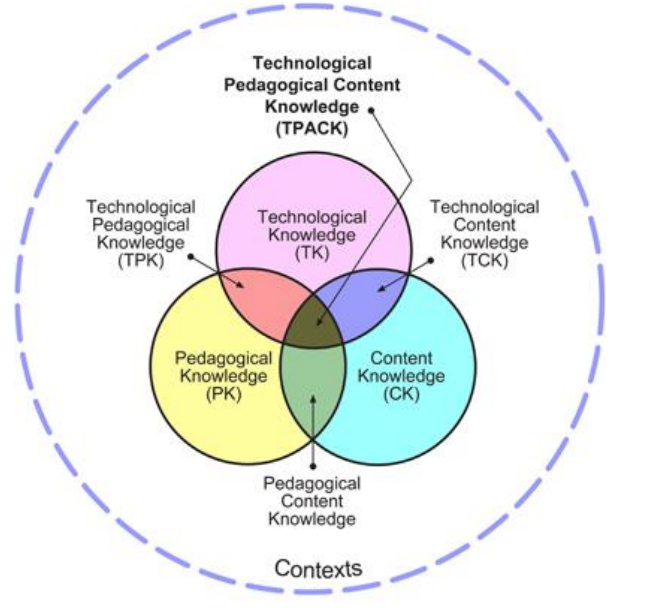Pedagogy first. Technology second.
You are the expert in your subject matter. Times are changing. Learners are changing. If you're teaching something kids can google, your time and their time is wasted.
We need to be building their skills sets. Preparing them for a world where basic info is in their pockets. What to do with that info however is critical. How to use that info to derive an understanding of the world around them is essential.
The sit-and-take method is a dying model. As is the one-size-fits all method of teaching. Think about one of your classes. You have groups of students that have varying needs. I'm not just talking about those with 504s and IEPs. Reading comprehension issues, learning disabilities, apathy, advanced learners, students with social-emotional needs to name just a few. The list is long and lengthy. The challenges immense. With each set of group needs, there are different strategies that need to be employed. Lesson design needs to accommodate and provide students with the tools to be successful. The learning environment (physical and intellectual) you create needs to be one where all students can learn, develop their skill set, achieve, and be successful.
Shifting the model of learning from a traditional to a blended one will not fix these problems overnight. But it will address the sort of learning environment needed to build the individual skills and abilities in our students while rising to the challenge of addressing their needs. A personalized, rigorous, and standards-based approach is what our students need and deserve.
Pedagogy is not subservient to technology in this model. Technology does play a role to facilitate the process. This model relies on the right technology to connect ELOs and your teaching philosophy. To engage students in the content and build their skills that will help them be successful in their next academic step. And skill development is key here. When looking at the top 10 skills students need to be successful, according to business leaders, content recall is no where to be found.
So how does this work? What is Blended Learning? Depends who you ask...but one common thread emerges. The practice is student-centered. One might argue Blended Learning is a combination of traditional methods mixed with independent online learning opportunities outside of the classroom. Others may it is the "intentional integration of online and in-person education," irregardless of when it takes place (home or in the classroom). It also has been described as using adaptive digital curriculum paired with data-driven instruction. There are many successful models around the country (even in our District!!) that demonstrate it can address the needs of a given student population. For more information about Blended Learning, the Colorado DOE has a great set of resources.
Take Natalie McCutchen. She's created a system for her Middle School Maths class in Franklin, Kentucky that proscribes student needs at the beginning of a unit and based on their performance, students are directed towards self-paced learning opportunities she curates for her students (a combination of textbook work, instructional videos, direct instruction, and digital content) in order for them to develop areas they are deficient in. They practice and demonstrate their understanding in a variety of ways.
There are independent workers, collaborative groups, groups of students that can not be relied upon to work independently getting additional instruction and attention. They work independently outside the classroom on the areas of deficiency. McCutchen monitors the class and provides individual guidance and feedback to all students. When they feel they have mastered the content, the students are given the earlier test again as a unit summative assessment.
She acknowledges not everything goes smoothly and she is constantly making adjustments to the system. She is always striving for personalizing this learning experience for her students, developing their academic skills, with the goal of creating life-long independent-learners.
She advises starting small before taking the leap. Pick a Unit, identify learning targets, the resources needed when those targets are not met (including practice tests), and the assessment all students take as a pre- and post-assessment.
Does this leave room for creativity? Absolutely! I love interactive/experiential simulations & project-based learning in my curriculum. I feel simulations drive home concepts in meaningful ways for a large majority of students. I also feel project-based learning offers students an opportunity to learn concepts in a deep manner while developing real-world, academic and career skills. I can not abandon them as they are as much apart of me as my sometimes incorrigible stubbornness. They play as much a role in a Blended Learning environment as direct instruction and delivering digital content does.
After all, its about the Pedagogy. Not the technology.





No comments:
Post a Comment